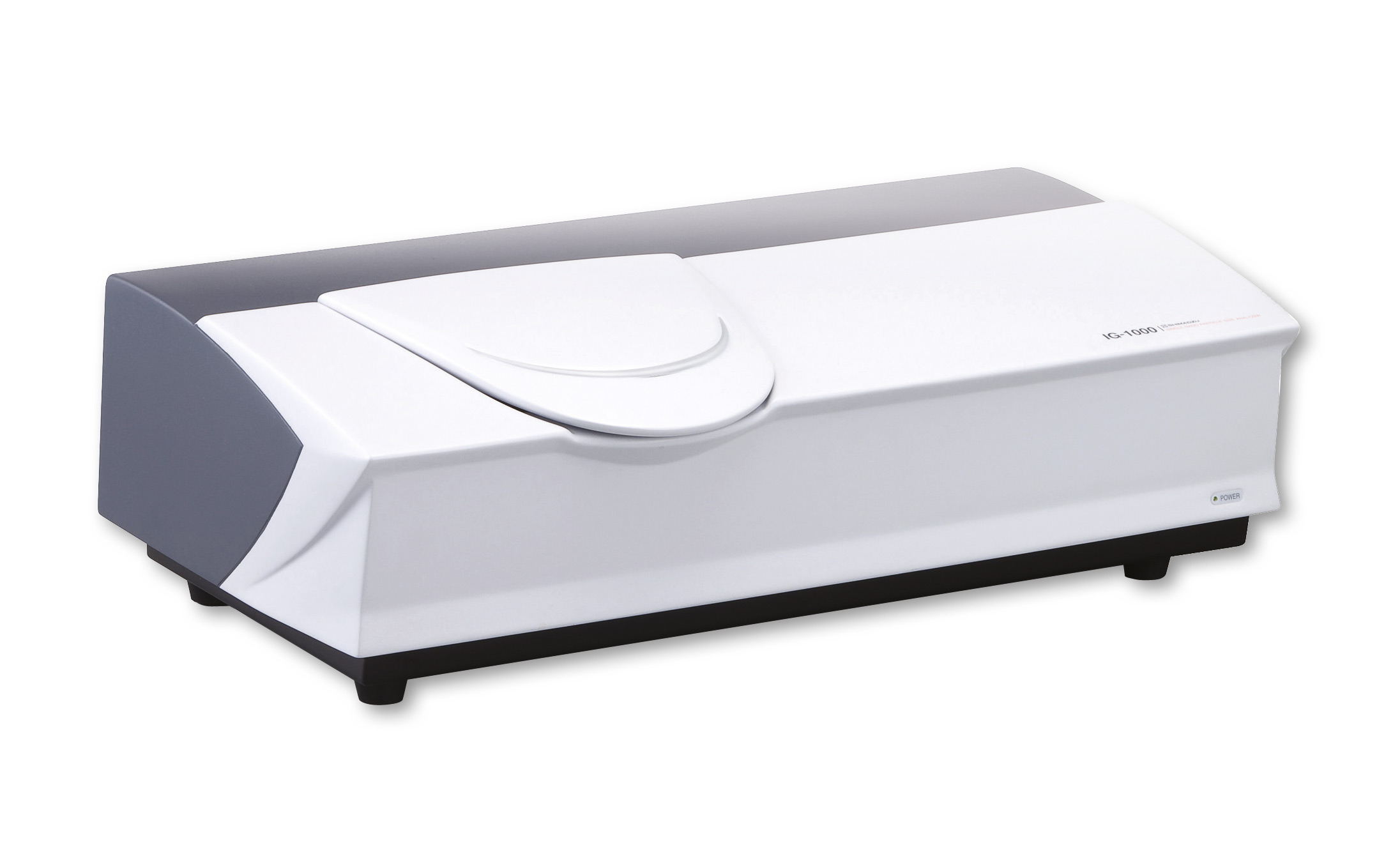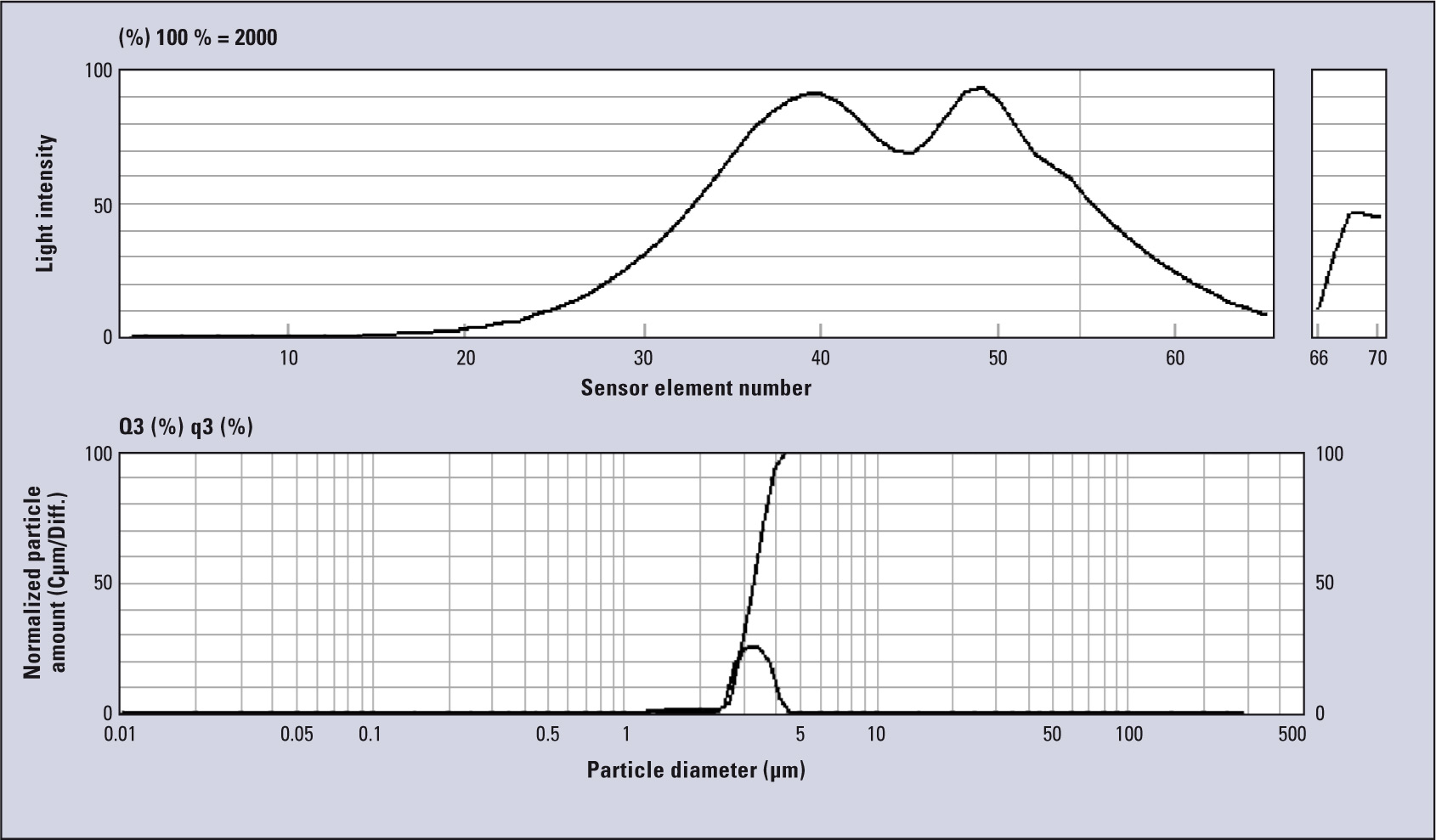Powerful together
Particle size analysis for the determination of the separation efficiency of an HPLC column
 The IG-1000 determines particles sizes of 0.5 up to 200 nm
The IG-1000 determines particles sizes of 0.5 up to 200 nm
With its particle size analyzer series, Shimadzu offers the possibility to determine particle sizes in the range of 0.5 nm to 3 mm. The analyzers differ in their measurement principles. Laser diffraction, for instance, is applied in the SALD analyzer series, which allow measurements in a broad spectrum of 10 nm to 3 mm. The IG-1000, on the other hand, is a specialized instrument used exclusively for the detection of nanoparticles in the range of 0.5 nm to 200 nm and works according to Shimadzu’s patented ‘induced grating’ principle.
In chemical analysis, a suitable selection of several analytical methods is often needed to provide a comprehensive solution to an analytical problem. Manufacturers with an organically grown and finely tuned product portfolio can offer their customers tailor-made solutions and are therefore best equipped to address the problem at hand.
 Figure 1: The upper diagram represents the light intensity per detector element. The lower diagram shows the particle size distribution.
Figure 1: The upper diagram represents the light intensity per detector element. The lower diagram shows the particle size distribution.
In the present case, an HPLC column packing was measured using the SALD-2201 particle size analyzer (measuring range of 30 nm – 1000 µm). HPLC is a routine method for the analysis of complex substance mixtures used in the pharmaceutical industry, clinical chemistry as well as in life and environmental sciences.
The heart of the HPLC system is the separation column in which the individual components of a mixture are separated. Conventional columns are usually packed with silica gel particles and the column separation efficiency is dependent on the particle size.
 Table 1: Measuring results
Table 1: Measuring results
For particle size determination, the column packing was removed from the column and dispersed in water. The mixture was then transferred to the autosampler of the SALD-2201 equipped with a high-performance stirrer, and subsequently measured in the analyzer’s flow cell.
An experimental value of 3.2 µm was found, which corresponded very well with the expected value of approximately 3 µm. Particle size analysis is therefore suitable for the determination of the separation efficiency of an HPLC column.